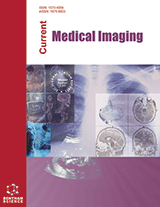
Abstract
Hybrid PET/MRI represents an innovative diagnostic technology for non-invasive in vivo imaging of cancer. Although the current clinical experience is limited to few clinical centres investing in such an ambitious technology, preliminary results are showing potentials for hybrid PET/MRI to enter in the clinical setting as imaging technology that can profoundly impact on the pool of available in vivo multimodal imaging studies. The higher contrast increases detectability of oncological lesions in specific applications; the reduction of radiation exposure leads benefits for children and young adults and for follow-up studies; the multi-functionality of PET/MRI opens up to several opportunities for assessing cancer disease and for addressing oncological patients to optimal care.
Keywords: Clinical PET/MRI, hybrid imaging, MRI nanotechnology application, multi-parametric MRI, oncology, PET.
Current Medical Imaging
Title:Hybrid PET/MRI for In Vivo Imaging of Cancer: Current Clinical Experiences and Recent Advances
Volume: 12
Author(s): Isabella Castiglioni, Francesca Gallivanone and Carla Canevari
Affiliation:
Keywords: Clinical PET/MRI, hybrid imaging, MRI nanotechnology application, multi-parametric MRI, oncology, PET.
Abstract: Hybrid PET/MRI represents an innovative diagnostic technology for non-invasive in vivo imaging of cancer. Although the current clinical experience is limited to few clinical centres investing in such an ambitious technology, preliminary results are showing potentials for hybrid PET/MRI to enter in the clinical setting as imaging technology that can profoundly impact on the pool of available in vivo multimodal imaging studies. The higher contrast increases detectability of oncological lesions in specific applications; the reduction of radiation exposure leads benefits for children and young adults and for follow-up studies; the multi-functionality of PET/MRI opens up to several opportunities for assessing cancer disease and for addressing oncological patients to optimal care.
Export Options
About this article
Cite this article as:
Castiglioni Isabella, Gallivanone Francesca and Canevari Carla, Hybrid PET/MRI for In Vivo Imaging of Cancer: Current Clinical Experiences and Recent Advances, Current Medical Imaging 2016; 12 (2) . https://dx.doi.org/10.2174/1573405612666160128234156
| DOI https://dx.doi.org/10.2174/1573405612666160128234156 |
Print ISSN 1573-4056 |
| Publisher Name Bentham Science Publisher |
Online ISSN 1875-6603 |
Call for Papers in Thematic Issues
Advancements and Applications of Photon Counting CT: Transforming Imaging Precision and Quantification
Photon Counting Computed Tomography (CT) represents a transformative advancement in medical imaging technology, offering unprecedented levels of precision and diagnostic capability. This special issue will explore the latest innovations and applications of photon counting CT, highlighting its advantages over traditional energy-integrating detectors. The scope includes an in-depth examination of its ...read more
Advancements in Deep Learning based Medical Image and Signal Processing for Healthcare Applications
The accurate predication from medical data (signals and images) analytics will be achieved through the use of cutting-edge AI tools for tailoring medical treatment to each patient. When the agents are done analysing the user's health data, the user can consult with the agents to receive advice and the most ...read more
AI-Driven Diagnostics in Radiology and Medical Imaging
Medical imaging data, such as X-rays, MRIs, ultrasounds, CT scans, and DXAs, can be analysed by AI algorithms to help healthcare professionals identify and diagnose diseases more rapidly and accurately. Among the most cutting-edge applications of artificial intelligence (AI) in healthcare are imaging-related applications like cancer detection. AI could revolutionise ...read more
Applying medical image processing techniques for early cancer detection in mammograms
Breast cancer survival and successful treatment are significantly boosted by early identification. Breast cancer screening is most commonly accomplished with mammography. The radiologist's experience and the image quality, among several other factors, might affect how well a mammogram is interpreted. Enhancing mammography analysis and increasing cancer early detection are made ...read more
Related Books
 37
37 5
5 2
2 1
1
- Author Guidelines
- Graphical Abstracts
- Fabricating and Stating False Information
- Research Misconduct
- Post Publication Discussions and Corrections
- Publishing Ethics and Rectitude
- Increase Visibility of Your Article
- Archiving Policies
- Peer Review Workflow
- Order Your Article Before Print
- Promote Your Article
- Manuscript Transfer Facility
- Editorial Policies
- Allegations from Whistleblowers
Related Articles
-
microRNAs: Small Molecules with a Potentially Role in Oral Squamous Cell Carcinoma
Current Pharmaceutical Design Application and Future Prospect of Extracellular Matrix Targeted Nanomaterials in Tumor Theranostics
Current Drug Targets Hematopoietic Growth Factors Support in the Elderly Cancer Patients Treated with Antiblastic Chemotherapy
Anti-Cancer Agents in Medicinal Chemistry Safety and Efficacy of Tumor-Targeted Interleukin 12 Gene Therapy in Treated and Non-Treated, Metastatic Lesions
Current Gene Therapy Targeting Tumor Ubiquitin-Proteasome Pathway with Polyphenols for Chemosensitization
Anti-Cancer Agents in Medicinal Chemistry Impact of the Somatotrope Growth Hormone (GH)/Insulin-Like Growth Factor 1 (IGF-1) Axis Upon Thymus Function: Pharmacological Implications in Regeneration of Immune Functions
Immunology, Endocrine & Metabolic Agents in Medicinal Chemistry (Discontinued) Targeting Hypoxia for Sensitization of Tumors to Radio- and Chemotherapy
Current Cancer Drug Targets Molecular Targeted Therapies in the Management of Head and Neck Squamous Cell Carcinoma: Recent Developments and Perspectives
Anti-Cancer Agents in Medicinal Chemistry Perspectives for Novel Mixed Diruthenium-Organic Drugs as Metallopharmaceuticals in Cancer Therapy
Anti-Cancer Agents in Medicinal Chemistry Signal Transduction Inhibitors as Radiosensitizers
Current Medicinal Chemistry - Anti-Cancer Agents A Cytotoxic Natural Product from Patrinia villosa Juss
Anti-Cancer Agents in Medicinal Chemistry Immunobiology of Herpes Simplex Virus and Cytomegalovirus Infections of the Fetus and Newborn
Current Immunology Reviews (Discontinued) Radioprotective Effects of Plants from the Lamiaceae Family
Anti-Cancer Agents in Medicinal Chemistry Approaches to Targeting Cancer Stem Cells in Solid Tumors
Current Stem Cell Research & Therapy The Salivary miRNome: A Promising Biomarker of Disease
MicroRNA Patent Selections:
Recent Patents on Endocrine, Metabolic & Immune Drug Discovery (Discontinued) Radioactive Iodine in Differentiated Carcinoma of Thyroid: An Overview
Current Radiopharmaceuticals ChemoImmunoModulation: Immune Regulation by the Antineoplastic Chemotherapeutic Agents
Current Medicinal Chemistry CXCR4 Receptor as a Promising Target for Oncolytic Drugs
Mini-Reviews in Medicinal Chemistry Effect of Prostaglandins on the Regulation of Tumor Growth
Current Medicinal Chemistry - Anti-Cancer Agents










